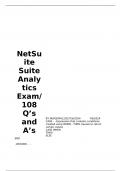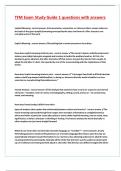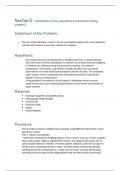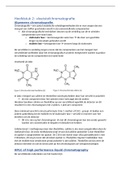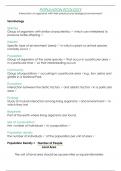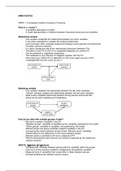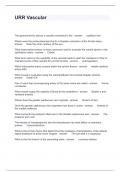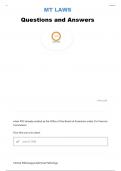Lunga Buthelezi
25 August 2023
1 Sequences
1.1 Definition
A sequence of real numbers (or a sequence in R) is a function defined on the set
N = {1, 2, . . .} of natural numbers whose range is contained in the set R of real
numbers.
In a broader context, it is important to recognize that a sequence
within a set A can be rigorously defined as a function f : N → A.
This formalism is often denoted using the concise notation an =
f (n), with n being an element of the natural numbers N.
However, within the realm of 2RA (Real Analysis), our primary
focus revolves around the study of real sequences f : N → R. This
specialization enables us to delve deep into the properties, limits,
and convergence behavior of sequences within the real number
system, we are doing Real Analysis after all
In other words, a sequence in R assigns to each natural number n = 1, 2, . . . a
uniquely determined real number. If (an ) : N → R is a sequence, we will usually
denote the value of X at n by the symbol an rather than using the function
notation A(n). The values an are also called the terms or the elements of the
sequence. We will denote this sequence by the notations
(an ), (an : n ∈ N ).
Of course, we will often use other letters, such as (bk ), (ci ), etc., to denote
sequences.
We purposely use parentheses to emphasize that the ordering induced by
the natural order of N is a matter of importance. Thus, we distinguish nota-
tionally between the sequence (an : n ∈ N ), whose infinitely many terms have
an ordering, and the set of values {an : n ∈ N } in the range of the sequence
that are not ordered. For example, the sequence X := ((−1)n : n ∈ N ) has in-
finitely many terms that alternate between 1 and −1, whereas the set of values
{(−1)n : n ∈ N } is equal to the set {1, −1}, which has only two elements.
1
, Sequences are often defined by giving a formula for the nth term xn . Fre-
quently, it is convenient to list the terms of a sequence in order, stopping when
the rule of formation seems evident. For example, we may define the sequence
of reciprocals of the even numbers by writing
1 1 1 1
(an ) := , , , ,...,
2 4 6 8
though a more satisfactory method is to specify the formula for the general term
and write
1
(an ) := : n ∈ N,
2n
or more simply, (an ) = (1/2n).
Another way of defining a sequence is to specify the value of x1 and give a
formula for xn+1 (n ≥ 1) in terms of an . More generally, we may specify x1 and
give a formula for obtaining xa+1 from a1 , a2 , . . . , an . Sequences defined in this
manner are said to be inductively (or recursively) defined.
2 Examples of sequences
(a) If b ∈ R, the sequence B := (b, b, b, . . .), all of whose terms equal b, is called
the constant sequence b. Thus, the constant sequence 1 is the sequence
(1, 1, 1, . . .), and the constant sequence 0 is the sequence (0, 0, 0, . . .).
(b) If b ∈ R, then B := (bn ) is the sequence B = (b, b2 , b3 , . . . , bn , . . .). In
particular, if b = 12 , then we obtain the sequence
1 1 1 1
, , ,..., n,....
2 4 8 2
3 The Limit of a Sequence
There are several different limit concepts in real analysis. The notion of a limit
of a sequence is the most fundamental, and it will be the primary focus of this
chapter.
3.1 Definition
A sequence A = (an ) in R is said to converge to a ∈ R, or a is said to be a limit
of (an ):
if for every ε > 0 there exists a natural number N (ε) such that for
all n ≥ N (ε), the terms an satisfy |an − a| < ε.
If a sequence has a limit, we say that the sequence is convergent; if it has
no limit, we say that the sequence is divergent.
2

